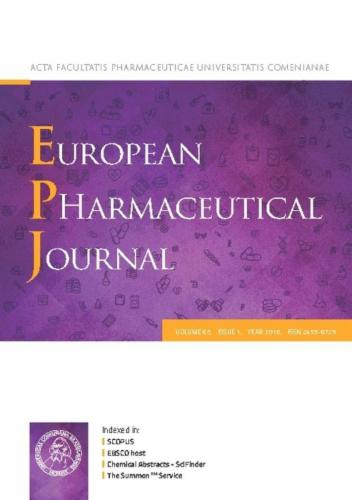Model-informed drug development of Mim8 – a next-generation bispecific antibody for treatment of haemophilia A
IF 4.7
3区 医学
Q1 PHARMACOLOGY & PHARMACY
引用次数: 0
Abstract
Background
Haemophilia A is a congenital bleeding disorder caused by deficiency of clotting factor VIII (FVIII). Mim8 (denecimig) is a next-generation activated FVIII mimetic bispecific antibody under phase 3 investigation for subcutaneous management of haemophilia A with or without FVIII inhibitors. Mim8 uses tiered dosing, which is a novel dosing approach in haemophilia where patients receive a fixed dose according to which body weight range they fall into and their chosen dosing frequency, reducing the need for dose calculations and potentially reducing treatment wastage.
Objectives
This study aimed to establish the early population pharmacokinetics (PK) and PK/pharmacodynamic (PD) properties of Mim8 using both biomarker and clinical endpoint data. Models were used to inform drug-development decisions using trial simulations and transform the dosing strategy in haemophilia to a novel simplified treatment option using tiered dosing in paediatric and adult populations.
Patients/Methods
Data from 129 participants exposed to Mim8 in the phase 1 PK trial (NCT0512747) and the FRONTIER1 trial (NCT04204408) were used to develop population PK and PK/PD models for thrombin generation and treated bleeds. The models were used for trial simulations to optimise dosing regimens evaluating Mim8 exposure, biomarker and clinical endpoint targets on a population level (paediatric and adolescent/adult) and on a typical subject level for the range of body weight (BW) in the trial. Clinical endpoint targets were set to: (1) at least 70 % of patients without treated bleeds in a 6-month trial on a population level and >95 % reduction in relative bleed risk on a typical subject level across all weight ranges and dosing frequencies, and (2) sustained peak Mim8 exposure below highest exposure observed in phase 1/2 trials.
Results
The population PK of Mim8 were best described with a structural two-compartment model with baseline BW as the most significant covariate for Mim8 exposure. Both peak thrombin response and Mim8 effect on bleed risk were best described with a direct link PK/PD model with an Emax response. Model-estimated EC50 was 2.03 µg/mL for peak thrombin and 0.07 µg/mL for bleed risk. Using trial simulations, tiered dosing in three weight ranges (<15, 15–<45, and ≥45 kg) was identified to reach the clinical endpoint targets and maximum desired exposure for all three dosing frequencies: once every week, once every 2 weeks, and once every month. This was done with an initial one-time loading dose establishing steady-state conditions within the first day, followed by maintenance doses at the desired dosing frequency. Loading and maintenance doses for the nine combinations of weight ranges and dosing frequencies were covered by five dose presentations. Ongoing phase 3 trials have been based on the dosing strategy presented here.
Conclusions
Model-informed drug development was used to design a novel treatment paradigm for patients living with haemophilia A by utilising a tiered-dosing strategy with Mim8, to be evaluated in phase 3 trials.

用于治疗a型血友病的新一代双特异性抗体Mim8的模型信息药物开发。
背景:A型血友病是由凝血因子VIII (FVIII)缺乏引起的先天性出血性疾病。Mim8 (denecimig)是一种新一代激活的FVIII模拟双特异性抗体,正在进行3期研究,用于有或没有FVIII抑制剂的a型血友病皮下治疗。Mim8使用分层给药,这是血友病患者的一种新型给药方法,患者根据其体重范围和选择的给药频率接受固定剂量,减少了剂量计算的需要,并可能减少治疗浪费。目的:本研究旨在利用生物标志物和临床终点数据建立Mim8的早期群体药代动力学(PK)和PK/药效学(PD)特性。模型被用于通过试验模拟来为药物开发决策提供信息,并将血友病的剂量策略转变为一种新的简化治疗选择,即在儿童和成人人群中使用分层剂量。患者/方法:来自129名在1期PK试验(NCT0512747)和FRONTIER1试验(NCT04204408)中暴露于Mim8的参与者的数据用于开发凝血酶生成和治疗出血的群体PK和PK/PD模型。这些模型用于试验模拟,以优化在人群水平(儿童和青少年/成人)和典型受试者体重(BW)范围内评估Mim8暴露、生物标志物和临床终点目标的给药方案。临床终点目标设定为:(1)在6个月的人群水平试验中,至少70%的患者未治疗出血,在所有体重范围和给药频率的典型受试者水平上,相对出血风险降低95%;(2)持续的峰值暴露低于1/2期试验中观察到的最高暴露。结果:Mim8的种群PK最好用结构双室模型来描述,基线体重是Mim8暴露的最显著协变量。凝血酶峰值反应和Mim8对出血风险的影响都最好用与Emax反应直接相关的PK/PD模型来描述。模型估计凝血酶峰值EC50为2.03µg/mL,出血风险EC50为0.07µg/mL。通过试验模拟,在三个体重范围内分层给药(结论:基于模型的药物开发利用Mim8分层给药策略,为a型血友病患者设计了一种新的治疗模式,将在3期试验中进行评估。
本文章由计算机程序翻译,如有差异,请以英文原文为准。
求助全文
约1分钟内获得全文
求助全文
来源期刊
CiteScore
9.60
自引率
2.20%
发文量
248
审稿时长
50 days
期刊介绍:
The journal publishes research articles, review articles and scientific commentaries on all aspects of the pharmaceutical sciences with emphasis on conceptual novelty and scientific quality. The Editors welcome articles in this multidisciplinary field, with a focus on topics relevant for drug discovery and development.
More specifically, the Journal publishes reports on medicinal chemistry, pharmacology, drug absorption and metabolism, pharmacokinetics and pharmacodynamics, pharmaceutical and biomedical analysis, drug delivery (including gene delivery), drug targeting, pharmaceutical technology, pharmaceutical biotechnology and clinical drug evaluation. The journal will typically not give priority to manuscripts focusing primarily on organic synthesis, natural products, adaptation of analytical approaches, or discussions pertaining to drug policy making.
Scientific commentaries and review articles are generally by invitation only or by consent of the Editors. Proceedings of scientific meetings may be published as special issues or supplements to the Journal.

 求助内容:
求助内容: 应助结果提醒方式:
应助结果提醒方式:


